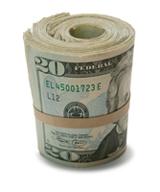 Everyone knows the importance of setting aside savings. Whether it’s for retirement, emergency funds or saving for the family vacation, it is something we should all be doing.
Everyone knows the importance of setting aside savings. Whether it’s for retirement, emergency funds or saving for the family vacation, it is something we should all be doing.
Yet sometimes this isn’t as easy as we would like and at the end of the month our money is spent without setting anything aside. If you have difficulty saving, these tools may be your best way to ensure you have savings for whatever comes.
Direct Deposit
Of all the tools to help you save, direct deposit has been around the longest. Direct deposit is when your employer deposits your paycheck directly to your checking, savings, retirement or brokerage accounts. Many times an employer can deposit your check to more than one account. If this is the case, to help you with your savings, you could split your check up by how it will be used. Spending money could go into your checking account, investment money into your brokerage account, retirement into an IRA or 401(k) and a percentage into a savings account. This way you don’t have to actually move the money into savings, investments or retirement yourself, it is done for you automatically at the beginning of the month. Setting up direct deposit is usually just a matter of completing a form at your workplace. For many people, money going directly into savings is forgotten and therefore less easily spent.
Tax Return Money
When tax season comes, consider saving your tax returns instead of spending them. This is an especially good idea for those who have a difficult time saving on their own. You can deposit your tax return directly into a savings account and start yourself a little nest egg. If you worry about your ability to keep it in a savings account, consider putting a lot of it into an account where you cannot get it out easily, such as an IRA, a CD or an investment with redemption fees when you take it out too quickly.
If you don’t have any issues with keeping your savings intact, instead of determining where your tax return money should go, you should instead determine why it is not coming to you in the first place. The IRS Web site has a calculator to estimate your federal taxes and tell you what exemptions are appropriate so you can break even on your taxes each year. Doing this will give you more money each paycheck, which enables you to start saving immediately instead of waiting for tax time. This also allows you to earn interest on money for a longer period of time.
Investment/Savings Credit Cards
Credit cards to actually help you save money? For people who use a credit card for convenience and rewards and not to carry a balance, this is a great opportunity. Recently, a few cards have come to the market offering investment or savings points when you make purchases. Fidelity Investments, Motley Fool and American Express are some of the first companies to offer these types of Credit Cards. The way they work is for every dollar in purchases, you earn points to put toward investments or savings of your choosing. Once there are enough points to reach a threshold (determined by the card), the points are redeemed as cash and deposited to an investment account, retirement account or savings account you have designated ahead of time.
Workplace Savings Plans
Many employers now offer workplace savings plans. These come in many shapes and forms, not just 401(k)’s but 403(b)’s, 457 plans, Roth 401(k) plans, etc. To contribute to a workplace savings plan, money has to come from your paycheck since they are employer sponsored plans. Your employer asks you to indicate what percentage of your paycheck should be deposited to your retirement savings account. Once this is done, the designated percentage will come out of your paycheck each time and go directly into your retirement account. It is difficult and sometimes impossible to retrieve money from your retirement account while working for the same employer so this is a great savings tool for those who have a hard time setting aside money. Workplace savings also is good as it lowers your overall tax burden for the year, giving you even more savings.
Automatic Increases
The last way to help increase your savings is to use an automatic increase program on your workplace savings plan. Not all employers offer this; contact your human resources or benefits department to see if it is an option. These programs facilitate saving for retirement by automatically increasing your retirement savings each year. You generally choose what percent you want to increase the savings by as well as the date. When the chosen date comes, a larger percentage of your paycheck starts going into your workplace savings account. You can have it take effect right after annual salary increases each year making it less noticeable in your take-home pay.
If saving money isn’t one of your stronger qualities, these savings programs can help. Savings is the best way to avoid financial ruin. Having money set aside for an emergency, job loss, car and home repairs, or any unexpected expenses prevents you from having to take loans to cover these problems. In addition to liquid savings, retirement savings and college savings are long-term goals that often get overlooked or procrastinated. Taking advantage of one or several options from above is the first step in creating a healthy financial future for you and your family.
Emma Snow is a writer who specializes in financial planning. She has worked in the financial industry for more eight years. Currently Emma works on a Finance and Investing site at http://www.finance-investing.com and Investing Partners http://www.investing-partners.com.
